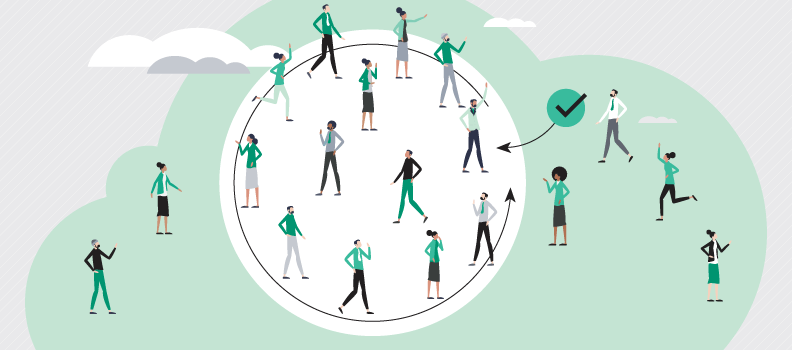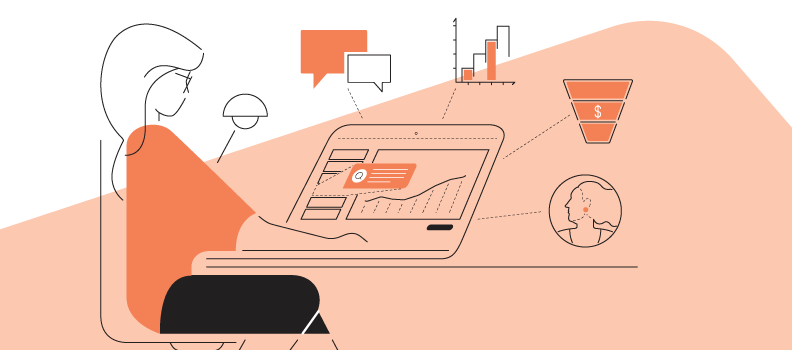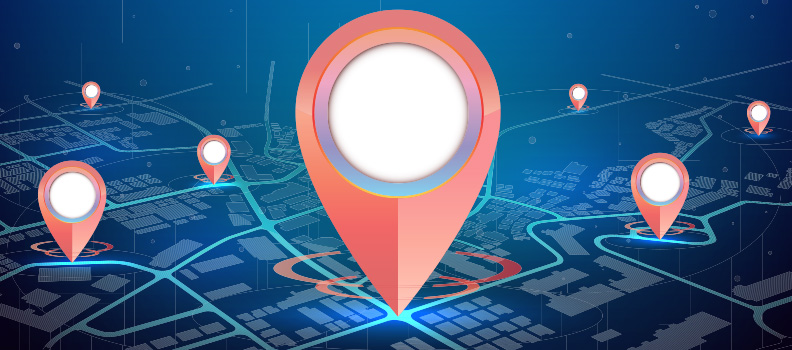Good marketing is essential to growing your business. But in order to market effectively, you need to first segment your list of customers.
Why?
While your customers undoubtedly have similar pain points, their buyer’s journey will vary. Coming to understand those variances, and marketing to them, is what will help you form strong connections.
Segmenting your customer list takes a time investment on the front end, but it’s worth it as your customer base continues to grow. Leading to lower overall sales and marketing costs as well as improved retention, segmentation is embraced by savvy business owners—to much reward.
It makes sense when you think about it. Sending highly-targeted messages to a very specific group of people will undoubtedly get more notice than a generic email sent to a larger list whose backgrounds are unknown.
How to create customer segments
There are four widely used categories for customer segmentation, including:
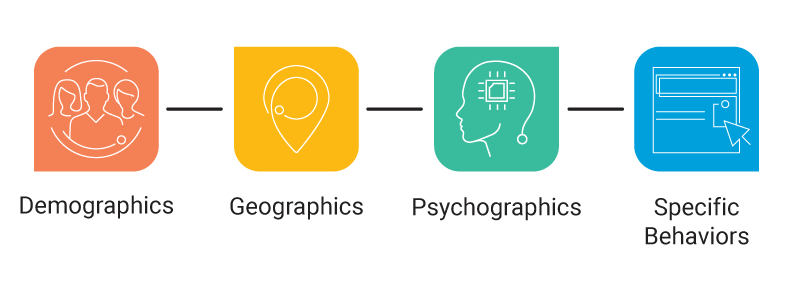
Demographics
This is data that describes “who” you are selling to. Consider segmenting by things like age, gender, ethnicity, households with children, marital status, or level of education.
Geographics
This is “where” you are selling your product or service. For some business, it may be locally and for others it could be worldwide. Consider segmenting by city, region, neighborhood, carrier route, and ZIP Code.
Psychographics
Harder to identify but vital information, this data gives you a clearer image of “why” you’re selling to a particular person or group. Consider segmenting by values, lifestyle, hobbies, life goals, or even specific personality traits.
Specific Behaviors
Referring to “how” this data takes a look at actions. These behaviors or actions can help you target new customers who are similar to your existing ones in addition to helping you perform tasks like cross-selling and upselling. Data may include brand interaction, higher-than-average click rate, purchase history, browsing habits, website activity, and mobile versus desktop users.
There are two additional segments that businesses should be aware of.
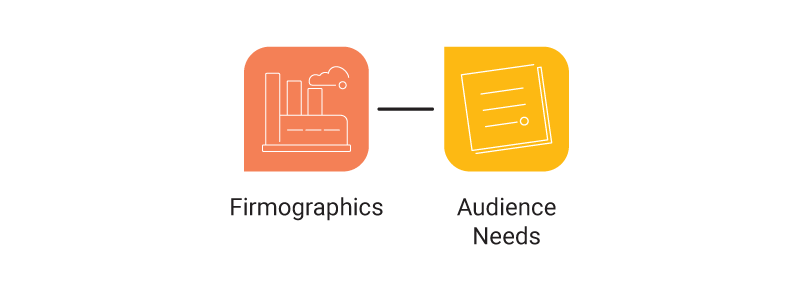
Firmographics
Used by B2Bs, this is a bit like demographics of a business and includes data such as industry, size, fleet size, location, and number of employees.
Audience Needs
This data is similar to psychographics in that it can be difficult to identify but provides a wealth of information for businesses willing to invest the time in collecting this data. Better understanding why your audience wants your product or service can lead to increased revenue. Consider collecting data such as specific desires regarding your product or service and the delivery method used to get it to them.
Data used commonly to segment
Before we go into less common ways to segment your list, let’s dive deeper into some beginner and intermediate customer segments.
Clicks
You may only be collecting email addresses at this time, but you can still segment your lists with those. Try segmenting by the @ and learn, for example, whether gmail addresses garner a higher engagement than yahoo addresses. Or sort your list by customers that have opened your emails versus those who haven’t.
Purchases
This doesn’t only include paid purchases, but also freebies someone has downloaded. Segment people who signed up for your newsletter to one list and segment people who opted-in for your free eBook on another. Understanding what drew your customers in, in the first place can help you understand who they are and what they want.
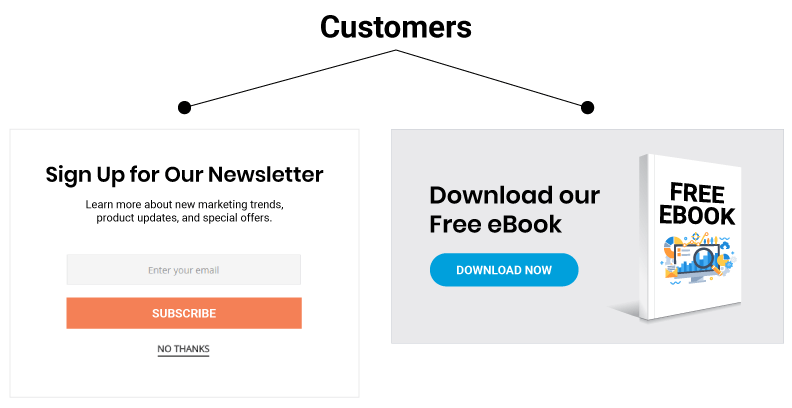
Content topics
What are customers clicking on in their inboxes? Sort your customers by the content you’re sending that is of interest to them. One person may be very interested in learning about the history of musical instruments while another person shows more interest in guitar lessons.
Geographical location
Depending on what you sell, you may be able to determine (albeit broadly) where someone lives depending on their history. For instance, someone who downloads your guide to surviving the winter season indoors with a toddler likely lives in a region that gets snow.
Brick-and-mortar versus online
In today’s world there are two ways to shop. While there is likely some crossover if you offer both a brick-and-mortar store and an online store, understanding where your customer shops the most often can help you better tailor your communication and offers. For instance, a customer who does 98% of their shopping online with you is unlikely to engage with an in-store offer.
Point of sales cycle
Someone joining your list for the first time should be in a different segment than someone who signed up to receive your emails back in 2014. That’s because however long someone has been on your email list is a great opportunity to gauge their familiarity with your business. From there you can tailor your content to fit their needs.
Birthday
Almost everyone loves to celebrate their birthday. And they love it when other people celebrate along with them. Show customers you care when you segment by their birthday (month or date). It engages them in a unique way and is viewed by many customers as a form of content personalization.
Lesser used ways to segment customer lists
When you’re not new to segmenting, you want more advanced ways to separate your customers into groups. Here are some less common (but no less effective) ways to divide up your list.
Format of content
How is your content consumed? Your customers all have different preferences when it comes to consumption whether they’d rather listen, read, or watch. And within that information, you can look for additional data—does your customer prefer to read an eBook or a blog? Understanding how people on your list digest content will allow you to deliver said content much more effectively.
Amount spent
Determining how much someone has spent on your products or services is an excellent way to segment your lists and help you better understand who might buy what in the future. For instance, someone who tends to spend $50 at a time should be approached with different products/services than someone who tends to spend $800 at a time.
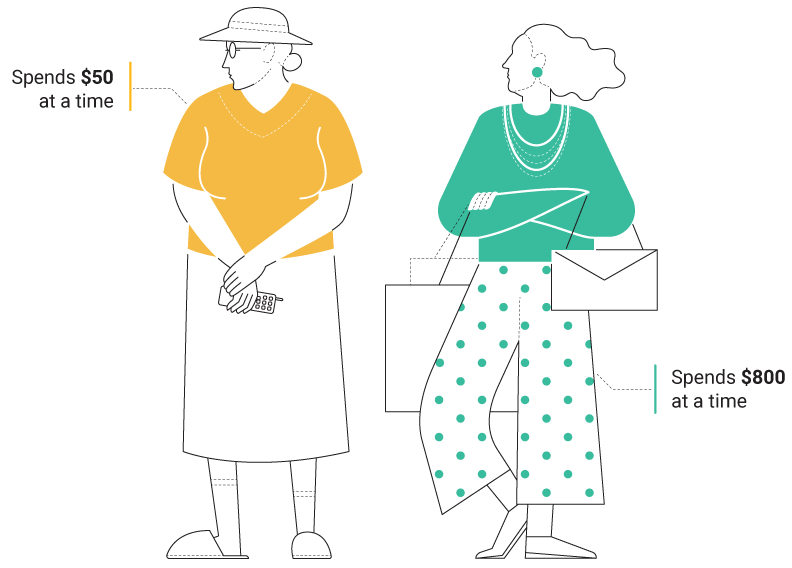
Expiration date
From a month-to-month subscription service to an annual renewal, segmenting your list this way allows you to send more targeted messaging about opportunities like discounted renewals or the benefits of “sticking with it” another 30 days.
Behavioral changes
Is a prospect that once purchased your product with regularity losing interest? Understanding how often your product should be purchased (ie: teeth whitening strips that should be re-purchased bi-annually) versus how often a typically “loyal” customer is purchasing can help you see who on your list may need a bit of nurturing.
Customers who refer
It’s what every business dreams of—fans who shout their praises. Understanding who on your list refers to people to your business can help you create targeted messaging and even offers that encourage them to do it more often such as free samples or discounts for their followers.
VIP’s
What customers are your top 1% in terms of things like engagement and/or purchases? Being able to offer your biggest fans special discounts, sneak peeks, first looks, and early registration goes a long way toward keeping them happy and engaged with your brand.
Do you need help sending targeted content to your customer segments? At Data Axle USA we can help you create personalized marketing campaigns, designed to make a difference in your bottom line. Choose from our trusted solutions including email, direct mail, social media advertising, and online advertising.




